Juniper virginian: description, planting and care rules
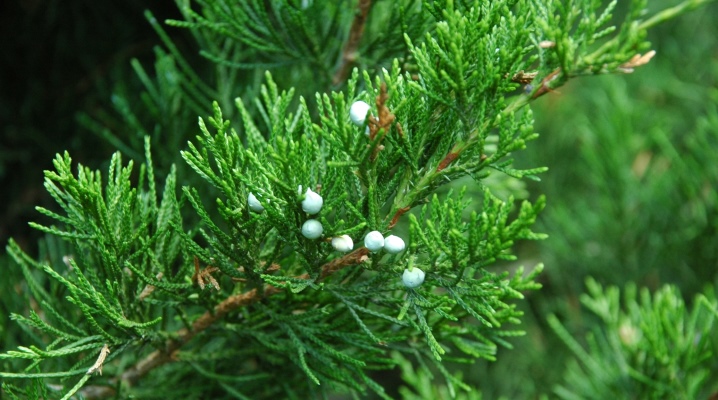
One of the most amazing and beautiful conifers is the Virginia juniper. It is also called one of the most useful, because it contains a large amount of phytoncides, which have a beneficial effect on the human condition. Knowing this, in the old days, the Indians carried a sick person to a juniper grove until his full recovery... Many endowed this plant with magical properties. Now this is treated with great skepticism, but the plant is still planted in personal plots.
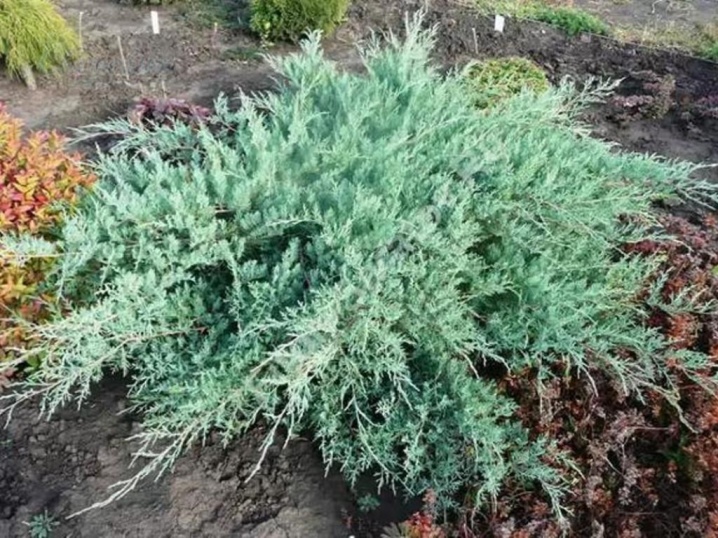
Description
The Latin name for the virginian juniper is Juniperus virginiana. It is an evergreen plant that belongs to cypress. Depending on the variety, the juniper can be either a tree or a shrub. For a more detailed acquaintance with the characteristics of plants, it is necessary to consider the characteristics of the juniper.
The maximum height of this plant can be up to 30 meters. If we talk about life expectancy, then some representatives of this species existed for up to 500 years. However, after 45 years of life, the juniper loses its former attractiveness. The crown becomes not so lush, and the needles are very rare. The fruits of the plant are cone berries that have different colors, but most often they are blue. Berries can stick to juniper branches until the first frost. Due to this, the bushes look more beautiful.
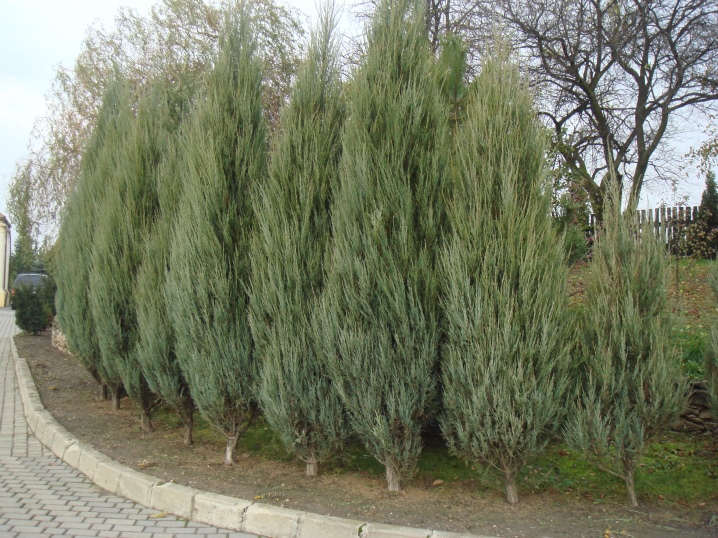
The roots of the Virginia juniper are well developed and have many lateral branches. Thanks to this, he is absolutely not afraid of any gusts of wind. The natural habitat of the plant is considered to be rocky terrain.
Varieties
There are many varieties of juniper. However, among them it is worth noting those that are most often used in landscape designs.
Gray oul
This type of juniper is a small undersized bush with a beautiful spreading crown. Branches are most often arranged horizontally. In an adult bush, the height can reach up to 3 meters, and in a circle - up to 7 meters. The needles are colored greenish-gray or gray-blue. The berries are also blue in color.
If more than one seedling is planted, then the distance between them should be within one and a half meters. The Gray Owl Juniper is resistant not only to frost, but also to drought. But if the heat is too strong, the bush will need additional watering. In addition, in order for the bush to always look neat and beautiful, it will need constant pruning.
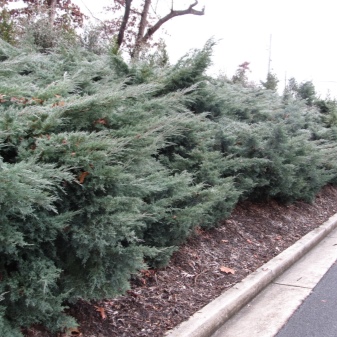
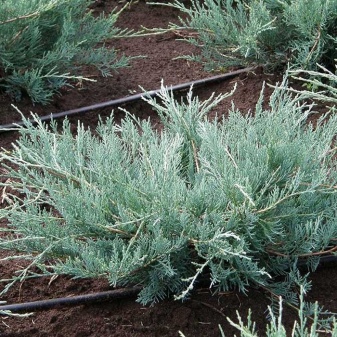
Hetz
Juniper of this variety is a shrub with a spreading crown. An adult plant grows up to 2 meters in height and up to 3 meters in diameter. The branches of this juniper have a bluish tint, which turns brown with the onset of the first frost. Its berries are dark blue.
This shrub is quite unpretentious, moreover, it is naturally resistant to frost and drought. When winter comes, juniper branches often break off under the weight of the snow. Therefore, in the fall, before the onset of cold weather, you need to tie the branches or install a special frame.
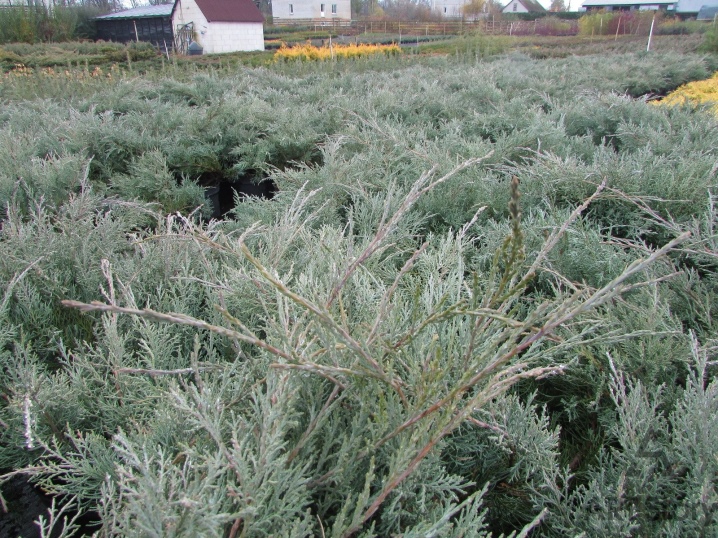
Glauka
Columnar variety. The height of an already mature plant is about 6 meters, and the diameter is 2.5 meters. Coniferous branches have a bluish-green hue, which becomes bronze with the onset of frost. The berries are colored in a gray shade, besides, there are usually a lot of them on the branches.
Like other varieties of Virginia juniper, Glauka is also considered to be resistant to drought and frost. But in order for the plant to develop normally, its branches must be regularly cut off.

Munglow
The crown of this tree has a conical shape. In height, it can grow up to 3.5-4 meters, and in diameter - up to one and a half meters. It is considered a fast-growing plant, as it can grow up to 15 centimeters in a year.
The coniferous leaves of the juniper are colored with a dove-gray hue, and the berries are dark blue. It is quite unpretentious, it can easily survive even severe frosts or drought.
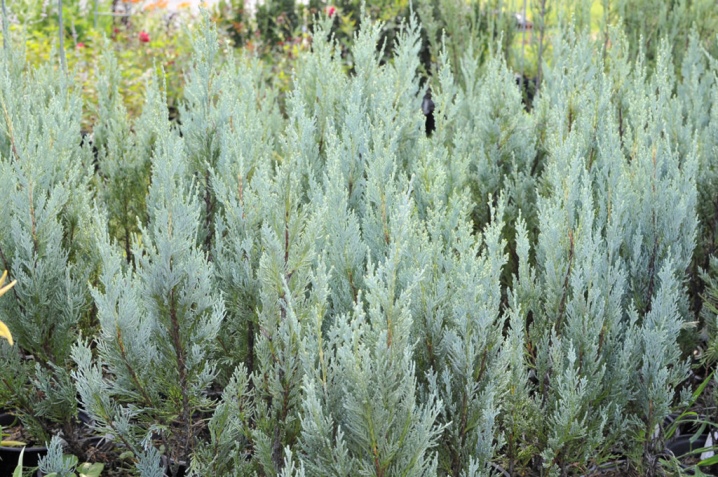
Blue Arrow
This Virginia juniper is a cone shrub. An adult plant can grow up to 2 meters in height and up to 1 meter in diameter. The coniferous leaves of the Blue Arrow juniper have a bright blue hue, and the berries are blue.
This variety is frost-resistant. But during heavy snowfalls, you will need to shake off the snow from the branches to avoid breaking them off, because the branches are too weak.
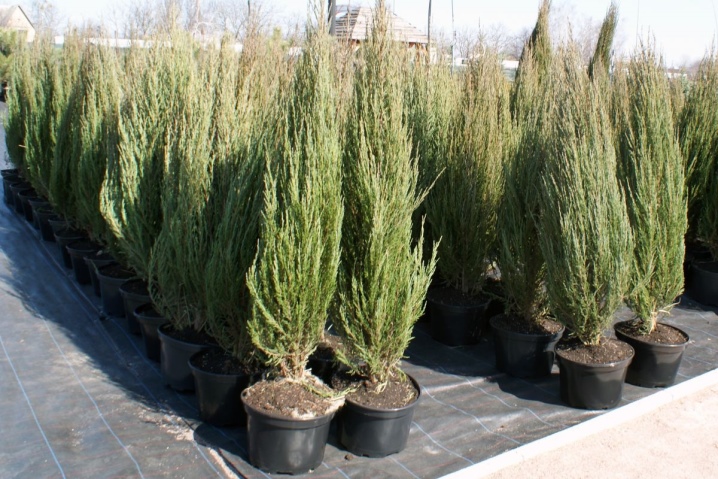
Canaherty
Such a juniper differs from others in its lush and loose crown. After 12 years, the height of the plant is 4 meters and one and a half meters in diameter. The branches of such a juniper are quite fluffy; they contain a large number of blue-green berries with a waxy coating. Such a variety is not afraid of a too dry summer, but it is best to cover the shrub during frosts.
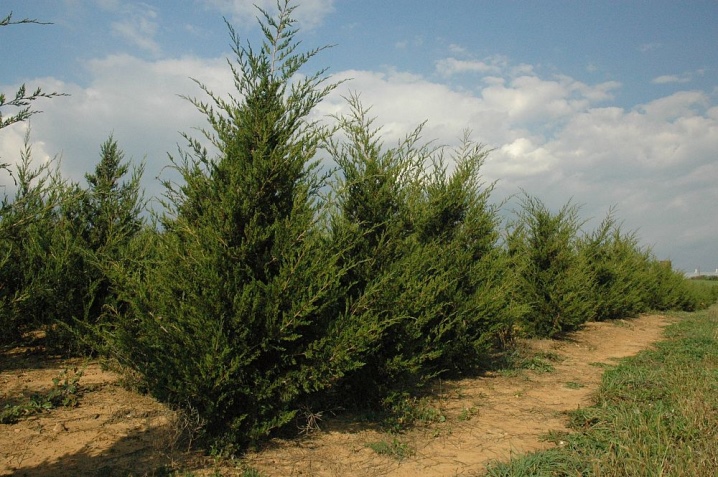
Golden spring
This juniper variety was bred by crossing several species. A young plant grows upward, but over the years, the branches droop a little. An adult juniper does not grow higher than 0.5 meters, but its diameter reaches one and a half meters. The needles are creamy.
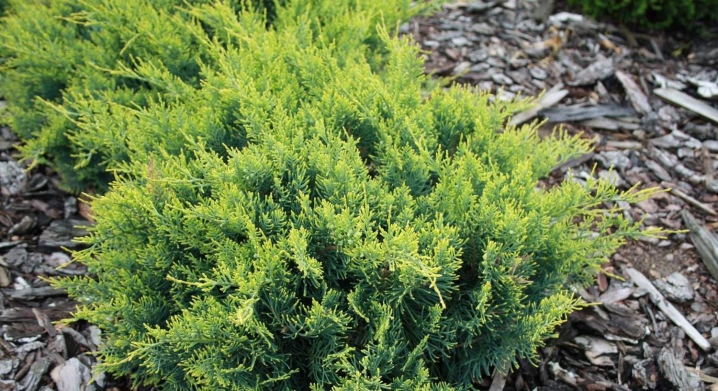
Pendula
This is a rather unusual variety of Virginia juniper. Its crown has an irregular shape, and the shoots are slightly curved and hanging. An adult plant grows up to 2 meters in height and the same in diameter.
The branches are decorated with a huge number of needles, and the berries are colored blue with a light blue tint. Juniper "Pendula" is frost-resistant.
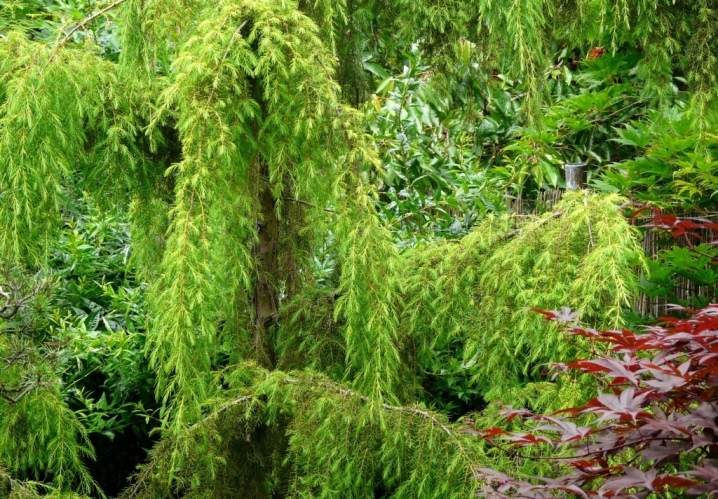
Cloud
You can buy seedlings of this juniper only in specialized nurseries. The height of an adult plant reaches only 0.5 meters, and its diameter is up to 2 meters. The needles of the shrubs of this variety have an almost silvery hue. Moreover, she does not inject at all. Most often they are used for container planting. When planted in open ground, the juniper does not need to be covered, because it is sufficiently resistant to frost. This variety is often used in landscaping.
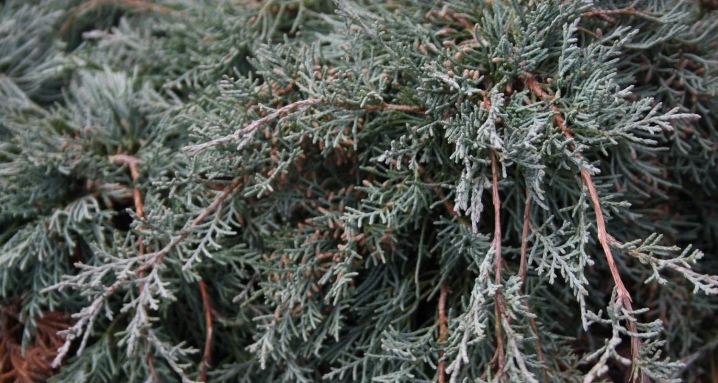
Reproduction
There are many varieties of juniper. However, among them it is worth noting those that are most often used in landscape designs.
Seeds
This option allows you to get a lot of full-fledged seedlings at the same time. The seeds can be purchased at specialty stores or you can get them yourself from the fruits growing on the juniper. They must be soaked for a day in a growth stimulator, and then for half an hour in an acidic solution.
After that, they can be planted in the prepared substrate. Saplings may only appear after a few years, so you will need to be patient. It will be possible to plant seedlings in open ground only after three years, when they get a little stronger.
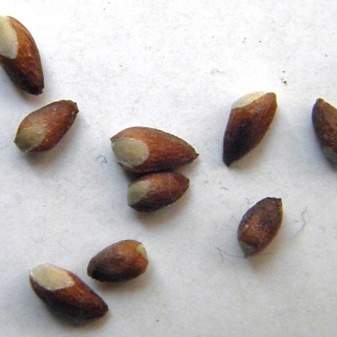
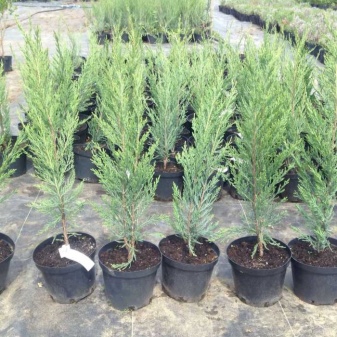
Using cuttings
First you need to start harvesting planting material. This is best done in February. For cutting, you need to take a well-disinfected tool and cut with it only the upper green shoots, up to 25 centimeters in length. After that, their bottom should be well cleaned of needles, about 3-4 centimeters.
The prepared cuttings can be planted in the prepared substrate at a distance of 0.5 meters from each other.By the fall, when strong roots appear, it will be possible to plant juniper seedlings in a permanent place.
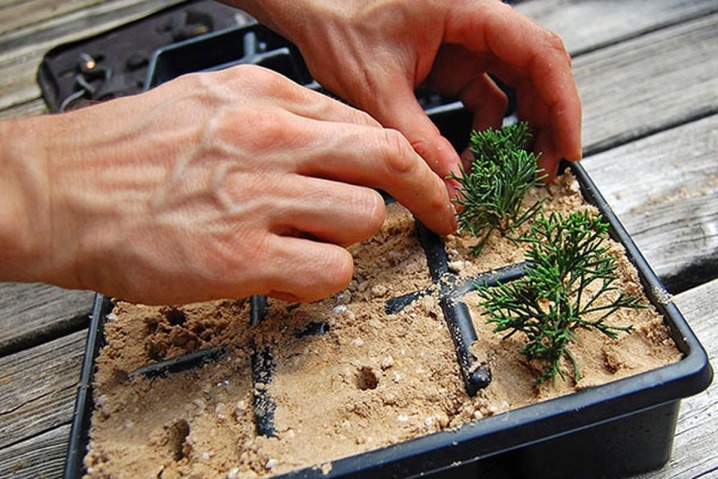
Layers
This option is only suitable for junipers with branches bent straight to the ground. First you need to make a long and shallow ditch, and then put a branch in it. From above it is necessary to sprinkle well with earth and peat. Do not forget about daily watering of the cuttings. After a year, they should have roots that can be planted from the mother shrub.
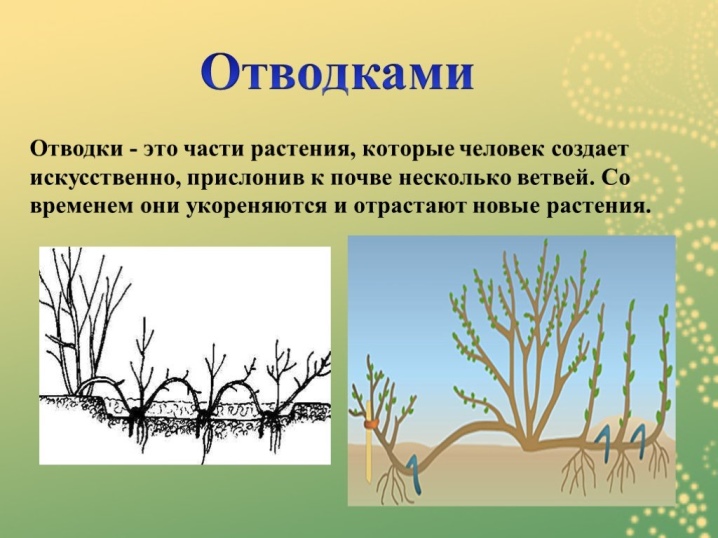
Landing rules
In order for the planting of juniper seedlings to be successful, you first need to choose the right planting material. It is best to plant in the courtyard those seedlings that have been grown in containers for at least 4 years. It is considered correct if the substrate in them is completely covered with a layer of moss.

In addition, disembarkation should take place in a well-clarified place. Indeed, in the shade of a juniper, growth slows down, and the needles become yellow and inconspicuous. Planting is best done in early spring. At this time, the ground is sufficiently moist, which means that the juniper will be able to root well.

The hole must be dug 14 days before planting. Its depth and diameter must be at least 60 centimeters. The bottom of the pit must be laid out with a drainage layer. Both large gravel and small bricks are suitable for this. After that the hole must be half filled with earth mixed with fine sand in equal proportions, and wait a little.

When the earth subsides, you can plant a seedling. Top it up with earth and water well. In addition, you need to cover the root part of the plant with a layer of mulch, which can be up to 6-8 centimeters.
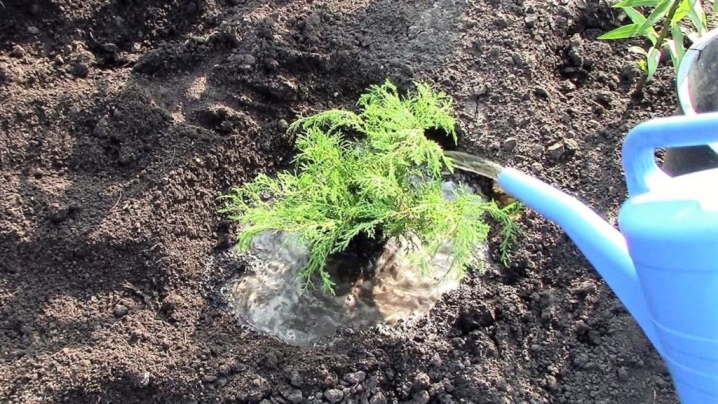
Care features
Since the Virginia juniper is completely unpretentious, taking care of it will not cause much trouble. Watering the plant is necessary only in too dry weather. Pour the liquid directly under the root - two buckets of water will be enough. In addition, do not forget to regularly weed, freeing the plant from weeds in this way.
As a top dressing, it is enough to add 300 grams of nitroammophoska. In order for the juniper to always look beautiful in the selected area, it must be pruned in time. However, this must be done carefully enough, because any mistake can lead to a slowdown in the growth of the seedling. For inexperienced gardeners, it is best to only prune broken or defective branches.
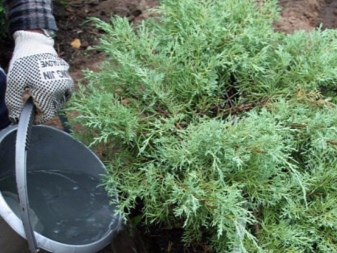

In addition, it is worth taking care that the needles do not burn out. To do this, you need to make a shelter for the crown. The covering material must be spread around the very top of the juniper. You can use ordinary burlap, cotton, and other materials for this. In winter, you can throw a layer of snow on top.
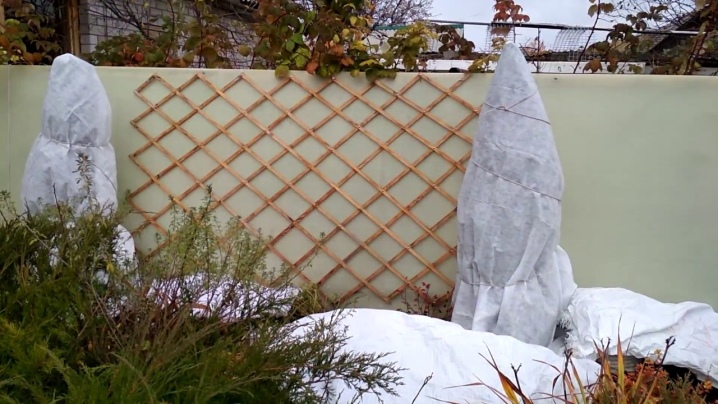
Diseases and pests
Most often, juniper suffers from fungal diseases. If the plant is damaged by rust, it begins to dry, and small thickenings appear on the branches. When ripe, these mushrooms completely cover these thickenings. They take on an orange tint. You can save a juniper only by completely removing all affected areas. In addition, they will all have to be burned. Places of cuts must be treated with a disinfectant solution.
If it was noticed that the top of the plant became dry, then this indicates the defeat of the juniper with a disease such as fusarium. The Fusarium fungus can spread throughout the plant. First, the needles on the branches turn red, and the roots turn completely black. A little later, the disease spreads further and blocks the supply of necessary nutrients. It is necessary to fight such a disease only with special chemicals. Fitosporin or Topaz are suitable for this. In addition, you can try replacing the land under the juniper. But most often, in this case, the plant completely dies.
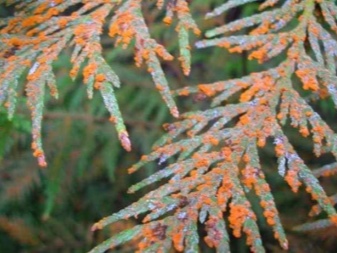
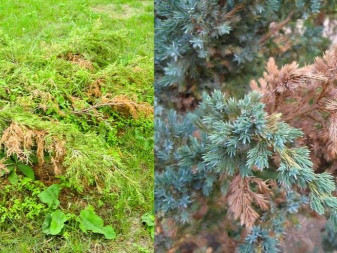
If a sharp yellowing of the needles was noticed, as well as its falling off, then this may be a schütte disease. In the fight against it, it is also necessary to use chemicals.

As for pests, they appear very rarely on junipers. However, for general acquaintance, it is necessary to consider their varieties.
- Juniper scabbard quite common among conifers. Young saplings especially suffer from it. With the advent of pests, their growth stops, and the needles acquire a brown tint. For the fight, you can use drugs such as "Aktara" or "Calypso".
- Juniper mealybug most often touches the bark and branches of the plant. With their appearance, the needles turn brown and also crumble. It is quite difficult to deal with these pests. It is necessary to spray the affected areas three times a day. In addition, new drugs must be used each time, since the worm quickly adapts.
- Juniper moth appears on plants in early April and immediately begins to twine around the branches. With the advent of caterpillars, the damage is even greater, because they feed on young branches. It is necessary to use chemicals against them, for example, "Calypso" or "Angio". Spraying must be done again and again, after 2 weeks. Otherwise, getting rid of moths simply will not work.
- Gall midge juniper affects the shoots at the tops of the plant. Most often these are small clusters that can be dealt with with special drugs. However, spraying must also be done 2 times.
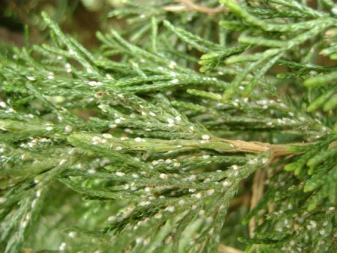
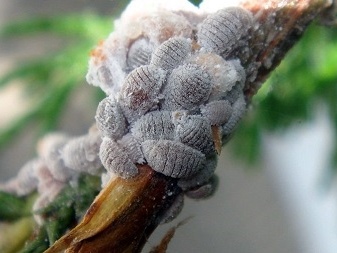
Examples in landscape design
Very often, designers use this beautiful plant to create landscape designs.
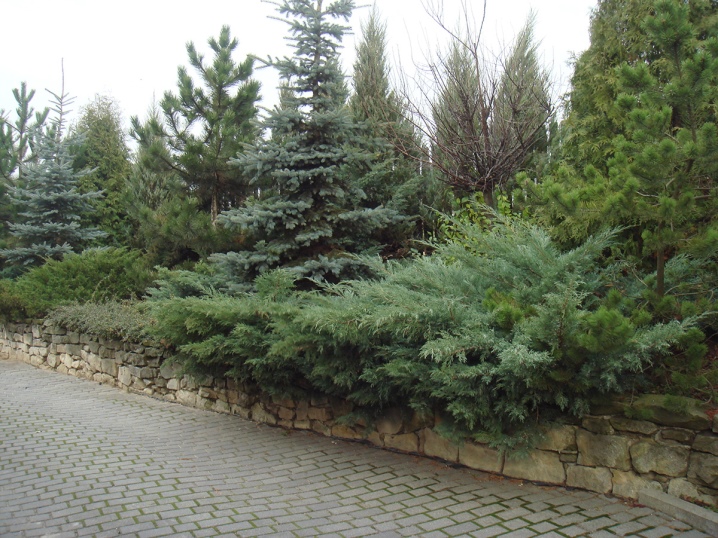
On a personal plot.
With the help of juniper, you can create an unusual flower bed that will not lose its attractiveness throughout the year. In addition, it goes well with other plants that are placed nearby.
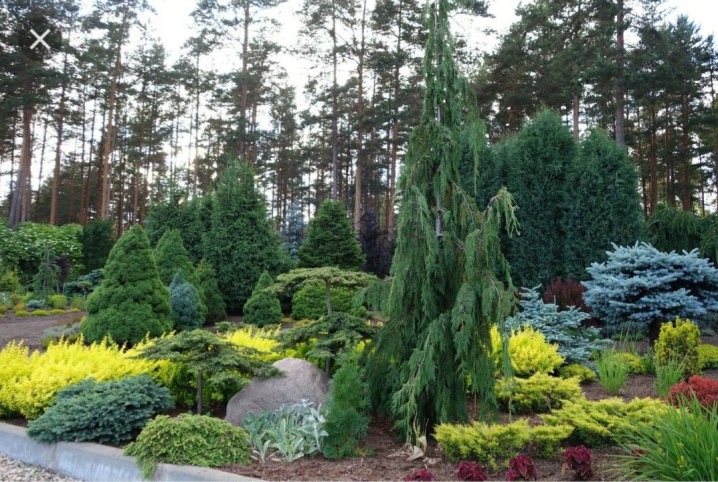
Hedge.
If you take the Skyrocket juniper, then it can be planted in groups as a hedge. It will look very beautiful and hide the entire courtyard from prying eyes.

Juniper with a spreading crown.
Such plants are most often used to create alpine slides or rockeries. Thanks to its unusual crown, it takes up a lot of space, besides, it looks very beautiful.
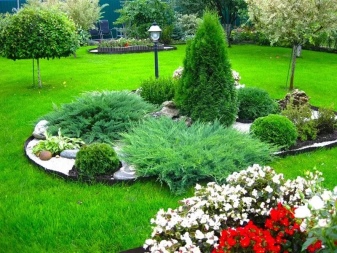
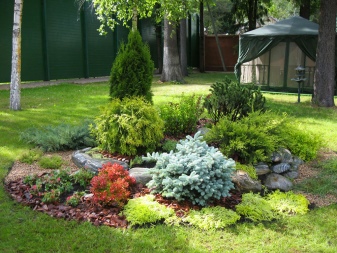
Summing up, we can say that the virgin juniper is perfect for planting both in the courtyard, and in parks or gardens. After all, this is a completely unpretentious plant that does not require special attention.
Juniper pruning in the video below.



































































The comment was sent successfully.